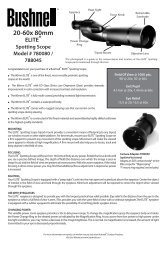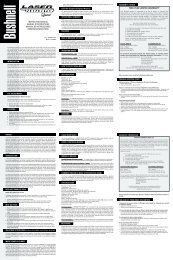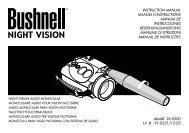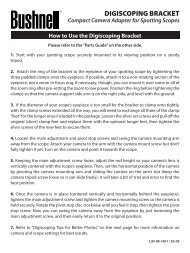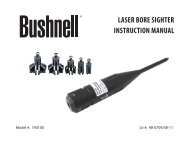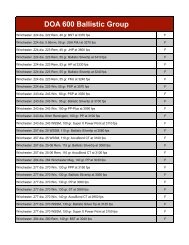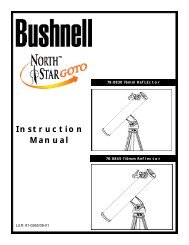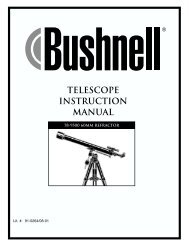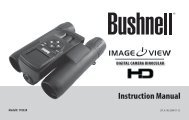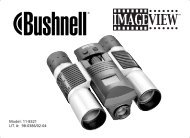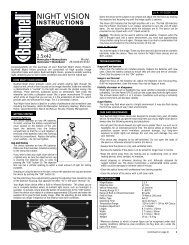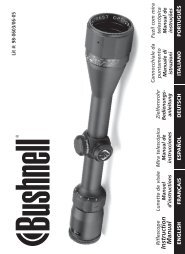PAGE GUIDE - Bushnell
PAGE GUIDE - Bushnell
PAGE GUIDE - Bushnell
You also want an ePaper? Increase the reach of your titles
YUMPU automatically turns print PDFs into web optimized ePapers that Google loves.
m heLPFuL hINTS<br />
1. Your telescope is a very sensitive instrument. For best results and fewer vibrations set your<br />
telescope up on a level location on the ground rather than your concrete driveway or your<br />
wooden deck. This will provide a more stable foundation for viewing, especially if you’ve<br />
drawn a crowd with your new telescope.<br />
2. If possible view from a location that has relatively few lights. This will allow you to see much<br />
fainter objects. You’d be surprised how much more you’ll see from your local lake or park<br />
when compared to a backyard in the city.<br />
3. Using your telescope out a window is NEVER recommended.<br />
4. View objects that are high in the sky if possible. Waiting until the object rises well above the<br />
horizon will provide a brighter and crisper image. Objects on the horizon are viewed through<br />
several layers of earth’s atmosphere. Ever wonder why the moon appears orange as it sets on<br />
the horizon? It’s because you are looking through a considerable more amount of atmosphere<br />
than you would directly overhead. (Note: If objects high in the sky are distorted or wavy, you<br />
are probably viewing on a very humid night.) During nights of unstable atmosphere, viewing<br />
through a telescope can be frustrating if not impossible. Astronomers refer to crisp, clear<br />
nights as nights of “good seeing.”<br />
11



